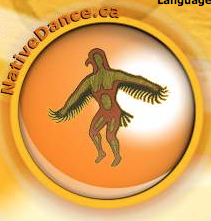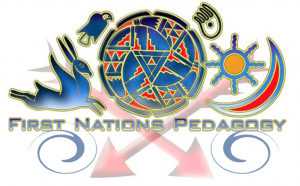This collection of websites all again connect with First Nation Film but I have some that have lesson plans attached to them.
#1 How People Got Fire
https://www.nfb.ca/film/how_people_got_fire/ (the film)
http://www.yesnet.yk.ca/firstnations/pdf/hpgf_guide.pdf (teacher’s guide)
This is a short animation that illustrates the connection between youth and elders. It is a beautiful animation, with very stylized illustrations. There are two different types of illustrations used – one that shows the relationship between the youth and elders and the other is the oral telling of the myth How People got Fire. The manner in which the story is told is quite unique and would expose students to another narrative style. I also found a study guide to go with the animation. It provides a lot of background information, as well as ways the short can be incorporated into the classroom.
#2 Documentary “We Will be Free” Aboriginal People in Canada (1 hour)
https://www.youtube.com/watch?v=OXT2JXe8mnA
I found this documentary online and thought it was quite informative. The documentary is about an hour in length and provides insight and understanding into the treatment and struggles faced by Aboriginal people today. It focuses on Aboriginal people in Winnipeg specifically but I think that much of the information would apply to other areas of the country. I don’t know if I would use the documentary with a class; there is some inappropriate language but it’s quite minor. I just think that some of the issues discussed could be difficult for a class – it would depend on the level of the students. The documentary doesn’t sugar-coat anything but speaks of the feelings people face and what is being done to improve life for First Nations people.
#3 The World Anew
http://www.cineworks.ca/theworldanew/
This website was really interesting! It houses and explores contemporary Frist Nations film. The site is connected to the British Columbia Arts Council and the City of Vancouver. It has a lot of information about specific First Nations film makers. There are some films featured on the site but it provides biographs and interviews with different Frist Nation film makers from Canada. The Resources section is quite detailed as well. It provides links to organization and activities “that help Aboriginal youth to get involved in filmmaking”. I would think that this would be a great resource for teachers in BC to help promote filmmaking in classes. Please note though that some of the resources links are expired so you will want to preview them to make sure they work before sharing them with a class. The films shared on the site are good quality and there are a variety of types; some are animations and others are not. They range in length from short films to feature length films. There also isn’t any problem streaming the films online.
#4 OSIE – Deepening Knowledge: Resources for and about Aboriginal Education
I stumbled upon this site and found it really interesting. There are a lot of resources that can be used by teachers. I found some of the downloadables really helpful for my class and it was nice that they could be changed and tailored to my individual classes. I particularly liked the handout “Criteria for Identifying Bias” in the Teachers Resource: Best Practices in including Aboriginal Peoples in the Curriculum. They prove a lot of teacher resources as well as student resources to use. I found that the content was appropriate for both grade school and high school. It needs to be noted that the information connects to the FNMI Curriculum for Ontario but I’m sure that many of the resources provided could be useful anywhere.
#5 Indigenous Feature Film Production in Canada: A National and International Perspective
Here is another site I just happened upon this resource when I was looking at the imagineNATIVE Film and Media Arts Festival. The study examined Aboriginal film production in Canada. I haven’t had an opportunity to read through the whole report yet (it’s 50+ pages) but the report examines the allocation of public funding for films in Canada as well as the barriers to film production for Aboriginal film makers. The document will tie in nicely with my other research about First Nations film making.



